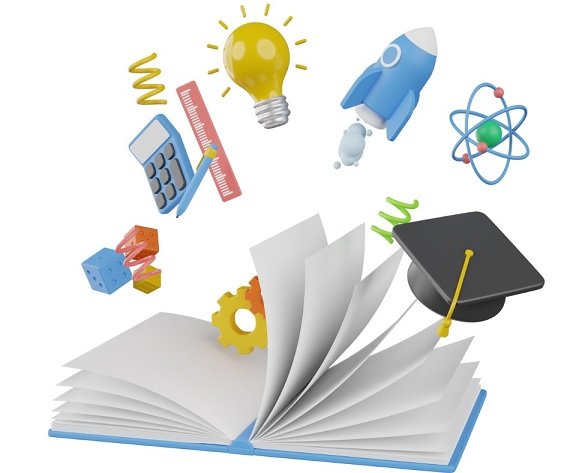As the world becomes increasingly tech-driven, the need for robust online STEM education has never been more critical. STEM—an acronym for science, technology, engineering, and mathematics—creates the foundation for many of today’s innovations. Understanding the complexities within these fields prepares students for careers that fuel our global economy, offering them the tools to become tomorrow’s pioneers and problem solvers.
STEM education is an interdisciplinary approach to learning where academic concepts are merged with real-world lessons. In practice, this means that students are encouraged to use both their academic knowledge and practical skills to tackle challenges they might face outside the classroom. The goal is to foster an education system that goes beyond textbooks and the classroom, making significant contributions to an individual’s career readiness and personal growth and encouraging innovation.
Introduction to STEM Education
The significance of STEM education lies in its ability to equip students with skills crucial in the 21st century, which is increasingly defined by technological advancements and the need for sustainable development solutions. These skills extend beyond operational knowledge of science and technology to include critical thinking, creativity, and problem-solving. In an interconnected global economy, this form of education prepares students not only to participate in but also to contribute to and innovate within the economy.
Benefits of STEM Education
Investing in STEM education can lead to a myriad of personal and professional benefits. Students who embrace STEM fields can unlock high-paying career opportunities while acquiring essential life skills, such as logical reasoning, adaptability, and resourcefulness. According to the New York Times, skills like analytical thinking and complex problem-solving are immensely valuable across diverse fields and are especially in demand in today’s competitive job market. These skills are beneficial in professional settings and vital for everyday problem-solving.
Teaching Methods That Work
Effective STEM education necessitates the implementation of innovative teaching methodologies. Educators have found immense success in incorporating project-based learning and collaborative projects that mirror real-world scenarios. This hands-on approach is foundational in making learning both relevant and engaging, offering students an opportunity to apply theoretical knowledge in practical settings. The use of technology in lessons, as highlighted by Edutopia, further enriches the learning experience, enhancing student engagement and understanding through interactive and immersive tools.
Real-World Applications of STEM
STEM education is at the core of pivotal developments across diverse industries. From developing cutting-edge technologies that address climate change to advancing medical research, STEM professionals play critical roles in effecting meaningful change. When schools encourage students to apply STEM principles to real-life challenges, they not only enhance learning but also inspire students to pursue careers that are driven by a desire to solve problems and innovate for the greater good, thus shaping future leaders and thinkers.
Challenges in STEM Education
Despite its critical importance, STEM education faces several significant challenges, including a scarcity of resources, a shortage of qualified educators, and issues related to providing equal access to quality education. Addressing these barriers requires strategic efforts and comprehensive government policies supporting educational institutions to promote equity and sustainability in STEM education. It’s crucial for policymakers to collaborate with educational entities to design systems that cater to diverse student needs while removing barriers to access.
The Role of Technology in STEM
Technology plays a transformative role in STEM education. Through the use of cutting-edge resources like augmented reality, virtual labs, and AI simulations, students can have previously unthinkable immersive learning experiences. These technologies not only make learning more engaging but also have the potential to significantly enhance students’ understanding and retention of complex concepts. They empower educators to deliver content in a way that’s not only accessible and effective but also reflective of the technological advancements that define the modern workplace.
Case Studies of Successful STEM Programs
Globally, several successful STEM programs demonstrate new educational paradigms. Some schools have collaborated with tech companies to provide students with the latest industrial tools and direct mentorship from professionals. These partnerships offer students insights into real-world applications of STEM, which traditional classroom settings alone might not provide. Moreover, these collaborations can help bridge the gap between academic learning and practical implementation, making the transition from education to employment seamless.
The Future of STEM: Trends and Predictions
The future of STEM education is marked by a growing emphasis on personalized learning and adaptive technologies. As industries evolve, educational methods must adapt to prepare students for jobs that may not yet exist. By incorporating personalized learning strategies and technologies, educators can better cater to individual student needs, helping them to harness their unique talents and potential. This adaptability ensures that students remain at the forefront of innovation and leadership in global dynamics, equipped to tackle the challenges of tomorrow.
Conclusion
The outlook for STEM education is both promising and essential. As we look ahead, it’s clear that STEM will continue to function as a cornerstone for innovation, economic growth, and societal progress. By blending academic rigor with real-world relevance, STEM education empowers students with the skills and mindset needed to thrive in a rapidly evolving, tech-driven world. Continued collaboration among schools, industries, and governments will be vital in overcoming existing challenges and expanding access to quality STEM learning opportunities. With the right investments, strategies, and support systems in place, STEM education can truly pave the way for the future generation of innovators, leaders, and change-makers.





